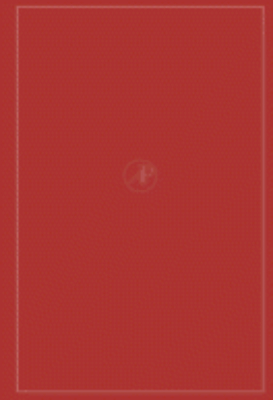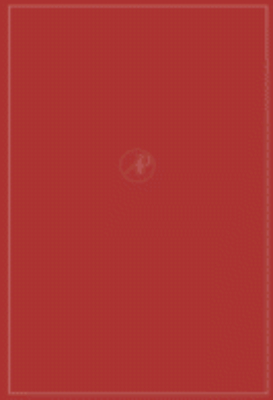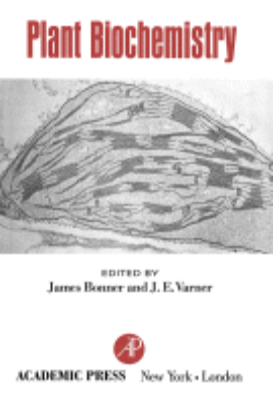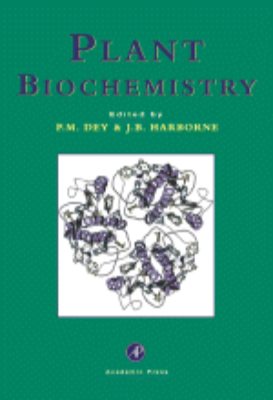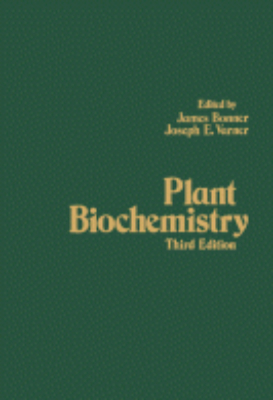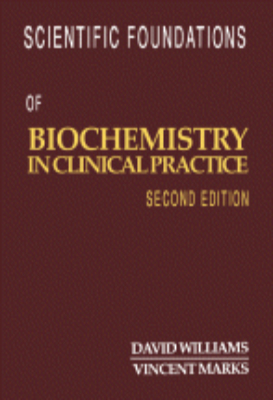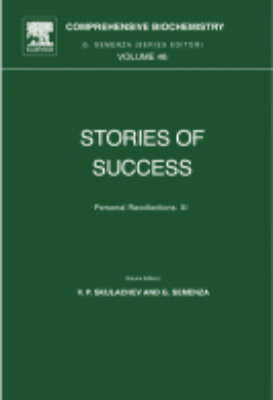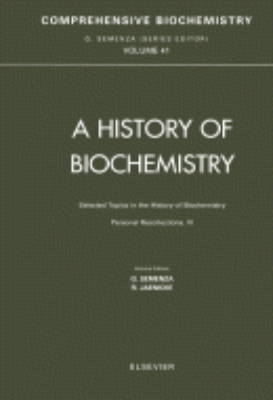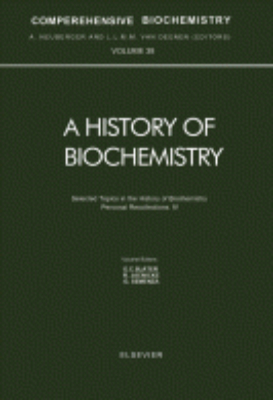E-Resources
Newer Methods of Nutritional Biochemistry with Applications and Interpretations: Volume 1
Newer Methods of Nutritional Biochemistry: With Applications and Interpretations, Volume I, provides graduate biochemistry students and medical scientists with a compilation of biochemical procedures which have extensive applications in nutrition research. To this end, several approaches to further exploration of protein, carbohydrate, and fat metabolism and the interrelationship with enzymes, vitamins, and minerals are covered in some detail. Comprised of 11 chapters, this book discusses proteins and amino acids; utilization of dietary proteins; intestinal absorption; diet and tissue enzymes; and rates and the kinetics of enzyme formation and destruction in the living animal. It considers vitamins B1, B2, B6, niacin, and ascorbic acid; vitamin B12 and intrinsic factor; carbohydrates; fats, fatty acids, and sterols; minerals; and biostatistical methods for nutritional and metabolic investigations.
Newer Methods of Nutritional Biochemistry with Applications and Interpretations: Volume 3
Newer Methods of Nutritional Biochemistry: With Applications and Interpretations, Volume III, provides a compilation of biochemical procedures which have extensive applications in nutrition research. The focus is on simple procedures to evaluate the utilization of dietary proteins given the pressing problems in emergency feeding of populations in developing countries. Comprised of nine chapters, this book discusses the nutritional and metabolic implications of changes in urinary amino acid levels. It examines the concept, role, and implications of protein reserves in the young and adult subjects. It also describes procedures which have contributed to the development of in vitro methods for the evaluation of protein quality. The book also discusses plant protein resources; lipoprotein transport; chemical assay of adrenocorticosteroids; studies of zinc metabolism; and folates in human nutrition.
Newer Methods of Nutritional Biochemistry with Applications and Interpretations: Volume 4
Newer Methods of Nutritional Biochemistry: With Applications and Interpretations, Volume IV, presents discussions and reviews of principles and procedures of nutritional biochemistry which have been developed for assays of nutritive quality of foods. Comprised of six chapters, this book describes determinations of dietary needs of fats, vitamins, and amino acids which fail to apply the long-known “”Law of Diminishing Returns”” to the experimental data. It examines the correlation of urinary metabolites with dietary conditions from the point of view of the dynamic state of metabolism. The book also discusses analytical methods for determining plasma amino acids and their application to nutritional problems of young children; laboratory methods for evaluating changes in protein quality; optimal nutrition for the aged and basic mechanisms of biological aging; and advances in instrumentation and methodology and their application in resolving biological and nutritional problems.
Newer Methods of Nutritional Biochemistry: Volume 2
Newer Methods of Nutritional Biochemistry: With Applications and Interpretations, Volume II provides information pertinent to nutritional biochemistry, including the development in enzyme concepts and methodology. This book discusses the mechanisms of several inborn errors of metabolisms and explains the methods by which these errors may be detected. Organized into 11 chapters, this volume starts with an overview of the advantages of body compositional data that are useful in evaluating treatment effects associated with physiological or nutritional experiments. This text then delineates the detection of aberrations in the metabolism of tryptophan, which may be induced by pathological stress. Other chapters consider the impact of hormones on the utilization of several nutrients. This book discusses as well the utilization of the essential nutrients, including amino acids, biotin, folic acid, pantothenic acid, and fat-soluble vitamins. The final chapter deals with principles and methods of nutritional needs in humans. Biochemists, graduate students, and investigators in the life sciences will find this book useful.
Newer Methods of Nutritional Biochemistry: Volume 3
Newer Methods of Nutritional Biochemistry: With Applications and Interpretations, Volume III presents the pressing problems in emergency feeding of populations in developing areas of the world with emphasis on the need for simple procedures to assess utilization of dietary proteins. This book reviews the criterion of protein utilization and considers the important components of protein metabolism. Organized into 11 chapters, this volume starts with an overview of the metabolic changes induced by deficiencies of essential nutrients. This text then examines the problems of human protein needs in the light of the food habits of vegetarians. Other chapters explore lipid metabolism in terms of its dynamic mechanisms. This book discusses as well the significance of minerals in the utilization of primary foodstuffs, namely, carbohydrates, proteins, and fats. The final chapter deals with the methodology for studies in human nutrition. This book is a valuable resource for biochemists, graduate students, and clinical researchers.
Newer Methods of Nutritional Biochemistry: Volume 5
Newer Methods of Nutritional Biochemistry: With Applications and Interpretations, Volume V, presents discussions and reviews of procedures that may have a significant impact on the future progress of the science of nutrition. Comprised of seven chapters, this book discusses the nutritional and metabolic aspects of circadian rhythms; the relationship of amino acid requirements in terms of amino acid composition and availability from various food sources; and the characteristics of protein-calorie malnutrition. It also describes methods, biochemical mechanisms, and dietary factors that influence the metabolic conversion of dietary carbohydrates into lipid moieties. The book examines the influence of nutritional factors on ribosomal dynamics and discusses the isolation, physical, and biochemical characteristics of proteinase inhibitors found in soy and lima beans and other edible vegetable seeds. A novel method for determining the biological value of protein foodstuffs is also included. This book will be a valuable resource for graduate students and investigators in nutrition and other life sciences.
Nuclear Magnetic Resonance in Biochemistry
Nuclear Magnetic Resonance in Biochemistry: Principles and Applications focuses on the principles and applications of nuclear magnetic resonance (NMR) in biochemistry. Topics covered include experimental methods in NMR; the mechanisms of NMR relaxation; chemical and paramagnetic shifts; spin-spin splitting; the use of NMR in investigations of biopolymers and biomolecular interactions; and molecular dynamics in biological and biochemical systems. This text is comprised of eight chapters; the first of which gives an overview of NMR spectroscopy and its use in studies of biological systems. The next two chapters discuss the theoretical basis for NMR applications in biochemistry, with emphasis on Bloch equations, quantum mechanics, correlation function and correlation time, double resonance, and chemical exchange. The reader is then introduced to the basis for chemical shifts and spin-spin splitting, along with several examples of the use of these NMR parameters in studies of small molecule interactions and structure. The experimental apparatus and procedures employed in NMR studies, Fourier transform NMR, and NMR spectral parameters of small molecules interacting with macromolecules are also considered. The book highlights the information obtainable from the spectra of biopolymers, and then concludes with a chapter on NMR investigations of the state of motion of lipids in membranes and model membranes; water in macromolecular and cellular systems; and sodium ion in biological tissue. This book is intended primarily for chemists, biochemists, biophysicists, and molecular biologists, as well as graduate students.
Nutrition and Biochemistry of Milk/maintenance
Lactation: A Comprehensive Treatise, Volume III: Nutrition and Biochemistry of Milk/Maintenance focuses on the nutrition and biochemistry of milk and its constituents, including the nutritional aspects of milk as a food and nutritional maintenance of lactation in those species from which milk is utilized as a source of human food. This book is divided into two partsbiochemistry of milk and its nutritive quality and maintenance of lactation. In these parts, this volume specifically discusses the differences among species in milk composition; significance of polymorphism; pesticide residues in bovine milk; and transfer of radiostrontium into milk. The role of the mammary gland in the immune system; methodology of diagnosis of milk hypersensitivity; and metabolic defects in galactose metabolism are also elaborated. This text likewise covers the factors affecting nutritional requirements of lactating animals and shape of the lactation curve. This publication is useful to biologists, food technologists, and college students interested in lactation research.
Nutritional Biochemistry
“Nutritional Biochemistry takes a scientific approach to nutrition. It covers not just “”whats””–nutritional requirements–but why they are required for human health, by describing their function at the cellular and molecular level. Each case study either leads to a subsequent discovery or enables an understanding of the physiological mechanisms of action of various nutrition-related processes. The text is “”picture-oriented”” and the commentary is directed towards explaining graphs, figures, and tables. Nutritional Biochemistry includes a discussion of relevant aspects of physiology, food chemistry, toxicology, pediatrics, and public health. Experimental techniques for nutritional science are emphasized, and primary data is included to help give students a feel for the nutrition literature. This “”real-world”” approach provides students with a realistic view of the basis for much of our understanding of nutritional biochemistry. Key Features. Integrates biochemistry and nutrition in a case-oriented method. Emphasizes a hands-on approach to learning – case histories and clinical and research data illustrate all major points. Places emphasis on metabolism – metabolic pathways, enzymology, nutrient requirements (including RDA values). Reveals the benefits of the Mediterranean diet, the biochemistry of exercise, the cell signaling pathways, how nutrition can influence the development of cancer, and the anthropometry and genetics of obesity”
ORD and CD in Chemistry and Biochemistry
ORD and CD in Chemistry and Biochemistry: An Introduction essentially presents the necessary foreword and theoretical foundation for the useful application of optical rotatory dispersion (ORD) and circular dichroism (CD) to certain common chemical problems. This book emphasizes the precision of ORD and CD data in terms of stereochemical information. The book begins with some historical references and a concise review of basic principles on stereochemistry. It further delves onto the phenomena of optical activity. Also included are the definitions and units commonly used in ORD and CD. The book also discusses optical properties of polymers, organometallic, and inorganic derivatives; and some of the aspects of magnetic optical rotator dispersion (MORD) and magnetic circular dichroism (MCD). A table that presents wavelength range of the Cotton effects of most chromophoric groupings concludes the book. This monograph is a helpful reference to students as well as professionals from both chemistry and biochemistry fields of science.
Pheromone Biochemistry
Pheromone Biochemistry covers chapters on Lepidoptera, ticks, flies, beetles, and even vertebrate olfactory biochemistry. The book discusses pheromone production and its regulation in female insects; as well as reception, perception, and degradation of pheromones by male insects. The text then describes the pheromone biosynthesis and its regulation and the reception and catabolism of pheromones. Researchers in the areas of chemistry, biochemistry, entomology, neurobiology, molecular biology, enzymology, morphology, behavior, and ecology will find the book useful.
Physiology and Biochemistry
The Structure and Function of Muscle, Second Edition, Volume III: Physiology and Biochemistry presents the physiology and biochemistry of muscle. This book discusses the various aspects of the structure of muscles and explores some aspects of muscle disease. Organized into 10 chapters, this edition begins with an overview of the transverse tubular system or T system of striated muscle. This text then examines the properties and function of membranes through electron microscopy. Other chapters consider in more detail from a biophysical viewpoint certain aspects of the series of events surrounding muscle contraction. This book discusses as well the significance of the central circulation and the amount of oxygen that can be delivered by the cardiovascular system. The final chapter deals with the heat output and chemical breakdown during an isometric twitch. This book is a valuable resource for scientists, neurobiologists, biologists, biochemists, physiologists, histologists, cytologists, and research workers.
Plant Biochemistry, 3rd ed.
“This fully revised translation of the world-renowned German edition covers the complete and modern knowledge of plant biochemistry. The book presents the topic in a concise and simplified manner so that students can digest the message and gain a basic knowledge of the entire field of plant biochemistry, from photosynthesis (the synthesis of natural plant products) to all kinds of genetic engineering with its many commercial applications. Topics include cell structure and function, lipid and polysaccharide metabolism, nitrogen fixation, phloem transport, synthesis and function of isoprenoids, phenylpropanoids and other secondary metabolites, plant growth regulation and development. Heldt provides a comprehensive description of photosynthesis, primary and secondary metabolism, the function of phytohormones and molecular engineering. The text covers research findings until the end of 2003 and identifies areas of future research. There are extensive references to the most recent scientific literature. Key Features. Illustrated with two-color diagrams and well designed metabolic schemes. Plant metabolism presented in the context of the structure and function of the plant. Many examples of commercial applications for the protection and quality improvement of harvest crops, plant breeding, and the production of raw materials for industrial use. Coverage of the latest research findings”
Plant Biochemistry: 1965
Plant Biochemistry focuses on the biological processes involved in plants, particularly noting metabolism, electron transport, biogenesis, and germination. The manuscript first offers information on the substructures and subfunctions of plant cell, including cell and subcell, enzymes, ribosomes, nucleus, cellular membranes, mitochondria and electron transport, chloroplast, and the substructure and function of the cell wall. The text then elaborates on basic metabolism. Enzymology, the path of carbon in respiratory metabolism, mono- and oligosaccharides, starch, insulin, and other reserve polysaccharides, and the biogenesis of the cell wall are discussed. The publication explains plant metabolism and control. Discussions focus on plant acids, alkaloid biogenesis, coumarins, phenylpropanes, and lignin, ethylene and polyacetylenes, steroids, and seed development and germination. The book is a valuable source of information for students or professional workers in the plant sciences.
Plant Biochemistry: 1997
“Plant Biochemistry provides students and researchers in plant sciences with a concise general account of plant biochemistry. The edited format allows recognized experts in plant biochemistry to contribute chapters on their special topics. Up-to-date surveys are divided into four sections: the cell, primary metabolism, special metabolism, and the plant and the environment. There is a strong emphasis on plant metabolism as well as enzymological, methodological, molecular, biological, functional, and regulatory aspects of plant biochemistry. Illustrations of metabolic pathways are used extensively, and further reading lists are also included. Key Features The coverage of the subject is divided into four sections. The plant cell-describing both molecular components and function. Primary metabolism-including the pathways of carbohydrate, lipid, nitrogen, nucleic acid and protein metabolism as well as gene regulation. Special metabolism-chapters on phenolics, isoprenoids and secondary nitrogen compounds. The plant and the environment-discussions of pathology, ecology and biotechnology at the molecular level”
Plant Biochemistry: Fourth Edition 2011
“The fully revised and expanded fourth edition of Plant Biochemistry presents the latest science on the molecular mechanisms of plant life. The book not only covers the basic principles of plant biology, such as photosynthesis, primary and secondary metabolism, the function of phytohormones, plant genetics, and plant biotechnology, but it also addresses the various commercial applications of plant biochemistry. Plant biochemistry is not only an important field of basic science explaining the molecular function of a plant, but is also an applied science that is in the position to contribute to the solution of agricultural and pharmaceutical problems. Plants are the source of important industrial raw material such as fat and starch but they are also the basis for the production of pharmaceutics. It is expected that in the future, gene technology will lead to the extensive use of plants as a means of producing sustainable raw material for industrial purposes. As such, the techniques and use of genetic engineering to improve crop plants and to provide sustainable raw materials for the chemical and pharmaceutical industries are described in this edition. The latest research findings have been included, and areas of future research are identified. Key Features. Offers the latest research findings in a concise and understandable manner. Presents plant metabolism in the context of the structure and the function of plants. Includes more than 300 two-color diagrams and metabolic schemes. Covers the various commercial applications of plant biochemistry. Provides extensive references to the recent scientific literature”
Plant Biochemistry: Third Edition 1976
Plant Biochemistry, Third Edition examines the fundamental aspects of plant biochemistry and biology, including taxonomy, morphology, ecology, horticulture, agronomy, and phytopathology. It discusses the substructures and subfunctions of plant cells, the basic metabolism of plants, and the mechanism and regulation as well as physiological significance of various pathways of photosynthetic carbon dioxide assimilation. Comprised of 26 chapters, this edition begins with an overview of the subcellular components of the plant cell, the overall logic or strategy that the cell uses, and the operation of individual subcellular systems. It discusses the plant ribosomes and nuclei, biosynthesis and assembly of cell membranes in plants, distribution and functional roles of microbodies in plants, photosynthesis and the general biology of chloroplasts, and plant microtubules. The remaining chapters focus on the biochemistry and functions of vacuoles, the primary cell wall and its biogenesis, the regulation of enzyme activity in metabolic pathways, the monosaccharides and oligosaccharides, and the lipid metabolism. The book concludes with a chapter on biological nitrogen fixation and its practical applications in agriculture. This book is a valuable resource for biochemists and plant biologists as well as advanced students or professional workers in plant sciences.
Practical Biochemistry for Colleges
This book presents a selection of tried and trusted laboratory experiments in the field of biochemistry. The experiments are described in detail and can be used directly or in a modified form. They are grouped according to a broad range of biochemical disciplines which allows those responsible for arranging practical classes to select experiments to complement any given biochemistry course. Suggestions are made for further work in more advanced classes. As well as the practical method the experiments are accompanied by background information, discussion of results, references for further study and illustrations.
Principles of Plant Biochemistry
Principles of Plant Biochemistry focuses on the methodologies, approaches, and techniques employed in plant biochemistry, including analysis of proteins, carbohydrates, vitamins, and metabolism. The publication first takes a look at proteins and carbohydrates. Discussions focus on general properties and structure of proteins, amino acid composition of proteins and properties of the protein molecule, isolation of proteins and the establishment of their homogeneity, monosaccharides, polysaccharides, and steroids. The text then elaborates on vitamins and secondary plant compounds, including aliphatic organic acids, glycosides, tannins, essential oils and resins, herbicides, antibiotics, and phytonicides. The manuscript examines enzymes and the role of metabolism in living organisms, as well as general properties and classification of enzymes and oxidases. The book then ponders on photosynthesis and chemosynthesis, interconversion of carbohydrates, and fermentation and respiration. The inter-relationship of metabolic processes and amino acid and protein metabolism are also discussed. The publication is a dependable reference for readers interested in plant biochemistry.
Problems of the Biochemistry of the Nervous System
Problems of the Biochemistry of the Nervous System is a collection of papers presented at the Second Conference on the Biochemistry of the Nervous System, organized by the Institute of Biochemistry of the Ukrainian Academy of Sciences on February 12-16, 1957. The contributors consider particularly Soviets considerable research works in the field of functional biochemistry and the dynamic aspects of the biochemistry of the central nervous system. This text is organized into 11 parts encompassing 33 chapters, and begins with reviews on proteins and their metabolism in the brain and peripheral nerves; the effect of functional states such as excitation and inhibition upon them; and the changes occurring in their metabolism during growth. The succeeding parts contain articles about phosphorus-containing substances and methods of their investigation. These topics are followed by discussion of the chemical nature of a brain glycogen and its different fractions; carbohydrate metabolism during excitation and inhibition; and the adrenaline metabolism. Other parts tackle the ammonia metabolism, the developmental biochemistry of the brain, and the histochemical approach to study nucleoproteins of the neurons. The remaining parts deal with hypothermia and the cerebral metabolism in some pathological conditions. This book will prove useful to biochemists, biologists, and neurologists.
Rapid Mixing and Sampling Techniques in Biochemistry
Rapid Mixing and Sampling Techniques in Biochemistry focuses on the applications of rapid reaction techniques to biochemical problems, including mechanical disturbance, cavitation, and spectroscopic evaluation. The selection first offers information on flash photographs of jet collision phenomena, curved coaxial mixer with two circular inlet channels, and ten jet mixers. Topics include cavitation and mechanical disturbance, efficiency of mixing, operation of the flow apparatus, and mixing tests. The book also ponders on cavitation in rapid flow apparatuses, as well as avoidance of cavitation and description of the flow apparatus. The publication takes a look at ball mixers, multiple rapid mixing of micro-samples by a gun-type projection system and its rapid spectroscopic evaluation, and thermal stopped-flow apparatus. The book also elaborates on pulsed flow apparatus, photochemical activation apparatus using flash tubes, and experimental evaluation of the Bray rapid freezing- technique. The selection is a valuable source of data for readers interested in rapid mixing and sampling techniques.
Recent Advances in Steroid Biochemistry
Recent Advances in Steroid Biochemistry contains the proceedings of the Second International Symposium of the Journal of Steroid Biochemistry. Separating 38 papers as chapters, this book discusses the partial purification of steroid-receptor complexes; enzymatic techniques in steroid assay; mass fragmentography of steroid hormones; biological consequences of 18-hydroxylation; and steroidogenesis in adrenal cells. This text also explores the regulation of steroidogenesis in testis; androgen binding proteins in different testis compartments; nuclear acceptor sites for glucocorticoid receptors; estrogen receptors in the pancreas; and molecular mechanisms of steroid hormone action.
Reflections on Biochemistry
Reflections on Biochemistry: In Honour of Severo Ochoa offers reflections on a wide range of topics relating to biochemistry, including energy metabolism, lipids and saccharides, regulation, nucleic acids and the genetic code, protein biosynthesis, and cell biology. The essays celebrate Severo Ochoa’s outstanding contributions to biochemistry spanning nearly half a century. This book is comprised of 47 chapters and begins with a biography of Ochoa and his scientific work in the field of biochemistry, particularly his research on intermediary metabolism, RNA synthesis, and the genetic code. The discussion then turns to energy metabolism, photosynthesis, and fermentation, touching on topics such as the role of lactic acid in the development of biochemistry and the biosynthesis of cell components from acetate. The next section is devoted to lipids, saccharides, and cell walls and includes chapters that deal with biotin, sulfur biochemistry, and dipicolinic acid. Subsequent chapters explore hormonal regulation of adipose tissue lipolysis; the structural relationship between genes and enzymes; bacteriophages, colicins, and ribosomes; and cell biology and neurobiology. This monograph will be of interest to biochemists and students of biochemistry.
Scientific Foundations of Biochemistry in Clinical Practice
Scientific Foundations of Biochemistry in Clinical Practice, Second Edition describes the pathological aspects of general metabolic disorders. This book is organized into 10 sections encompassing 45 chapters that discuss the nature of disorders involving disturbance in hydrogen ion concentration and blood gases, as well as the disorders of fluid and electrolyte balance. Some of the topics covered in the book are the chemical analysis of urine; neonatal screening for biochemical disorders; clinical biochemistry of alcohol, in intensive and postoperative care; psychiatric disorders of biochemical origin; abnormalities of the plasma proteins; assessment of gastrointestinal function; and calcium metabolism. Other chapters examine the nature, conditions, and diagnosis of bone disorders. A chapter emphasizes the functions of hypothalamus and pituitary. Another chapter looks into the biochemistry and toxicology of metals. The final chapters are devoted to the classification of connective tissue diseases and to the examination of clinical biochemistry of the central nervous system. The book can provide useful information to doctors, biochemists, students, and researchers.




